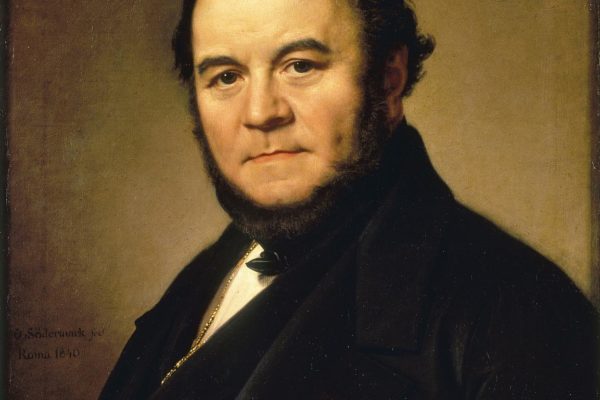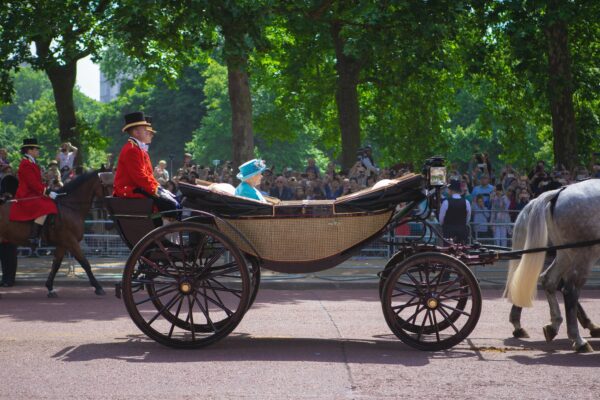– first part –
Honour, commerce and nobility
Honour is the thematic core in Behn’s work and it can be connected not only with religious issues but also with nobility. In Oroonoko the prince is not anymore the center of the market, the fact that he is sold like a commodity implies that he does not have power over it anymore even though he is noble; it is a symptom of the separation of powers in modern society. Habermas underlines the conflict between the prince’s power and the estate liberties that started in the thirteenth century but reached the complete development only in the modern era especially in England “where the prince’s power was relatively reduced by a parliament[1]. This tension between authorities generates in Behn’s contemporary society a switch in the way people perceive themselves as private individuals in a public sphere and a crisis of values. It is possible perceiving this struggle in the book because how the protagonist’s status evolves during the story. There is a radical shift in Oroonoko’s social position that is also connected with his physical appearance and how it degrades as the time-line goes on.
The description of a beautiful prince
It’s the beginning of the book: a general of the army and a man of refined wit educated as a European nobleman. This description collimates with the highest status the prince reaches during the narration. When the story ends Oroonoko is reduced as the ghost of himself not only because of the physical mutilations actuated as a punishment but he is crippled also in his spirit after Imoninda’s death: “if before we thought so beautiful a sight, he was now so altered that his face was like a death’s head blacked over, nothing but teeth and eyeholes”[2]. This descending trajectory of the main character can be seen as a metaphor of nobility in this period especially about what concerns its role in society. “England in 1688 was a world in which divine-right Toryism was dying, eroded by Whig principles and by the steady expansion of commerce and the bourgeoisie”3]. The tragic ending of the story indicates the conscience of the author about the fact that the old values she promulgates in the book are falling apart and even if “honor and aristocracy were far from moribund”[4]at this time they were quite anachronistic.
Defoe promulgates a different concept of honour
The first distinction is that he equalises honour with credit: “in our Language is call’d CREDIT, in some Countries Honour”[5]. In the whole text the author uses a lexis correlated with the realm of money and commerce that indicates his progressive ideology and a change in society. For Defoe honour is not connected anymore with birth and referring to Lady Credit he states: “Kings cannot bribe her”[6]. He mentions freely some kings like Charles II and James that lost honour and never were able to regain it. This value in Defoe is not exclusively connected with money because speaking about Charles II he states “he got the Money indeed, but he lost the CREDIT[7]. This is a common point with Behn’s text in which is possible to see that, once lost, honour is impossible to regain and the only solution is death. For this reason Oroonoko, who is always moved by honour, decides to end his story in such a tragic manner. In the end after being whipped for his rebellion, when he decides to kill his wife and his unborn son, the reason that he gives for acting in this way is that “Oroonoko scorns to live with the indignity that was put on Ceasar [his name as a slave]”[8].
The only way to cancel dishonour is to clean the spot with blood
Even if Defoe is not as drastic as the African prince he claims about Lady Credit that “she is the most difficult to be friend again”[9]. In Oroonoko’s world it is quite impossible to regain honour a second time. This concept is connected not only with nobility and conservative ideology but it’s also crucial as a measuring stick to evaluate society. It is possible to classify the characters using honour as a unit to create a scale. On the top of it is clearly situated Oroonoko with his wife while on the other side there are the sea captain, the governor who orders the protagonist’s death and the slaves who betray Oroonoko. The first group is composed by characters who belong to the nobility and are pagan, the main trait of the two lovers is that they always keep the promises they make. For example Imoninda, even if she is not sure that she is going to meet Oroonoko again in her life, keeps being loyal to her husband.
In the second part of the book she is reintroduced with the name of Clemene and the reader is told that “if she were capable of love, one sweared she languished for some absent, happy man”[10]. On the other hand characters like the sea captain, the governor and the salves only act for their personal interest. This is clearly seen for the sea captain and the governor because they earn money but in the case of the slaves it is less evident as they don’t earn a wage. They at first follow Oroonoko who promises liberty but in the end they behave as cowards and act to gain as much as possible with the lowest risk.
Characters and honour
The authoress answers the modern dilemma of the weakening of value in the contemporary society with an old ideal such as honour, by putting at the centre of the scene a character like Prince Oroonoko who embodies a conservative perspective. Historically this ideal was a crucial value for the nobility and indeed Behn connects the ethic of honour with Oroonoko’s birth. The prince as a matter of fact is a role model for the English nobility, this is clear since the first pages of the work in which the main character is described with European traits not only physically but also intellectually[1]. Behn’s concept of honour is the key to explain the text in which she shows her political purpose and the word honour is repeated obsessively for the whole text. As said before this is a value connected with nobility and before the eighteenth century it was linked both with private and public realm because there was no separation between these two spheres.
When Behn, or her characters on her behalf, speak about this value it is possible to notice an absence of separation between the two faces of honour, in this work it continues to be both public and private. Indeed the concept of honour is connected with the figure of Oroonoko in front of the world; he is a man capable of inspiring respect even to the slave traders and everyone who see him understand easily his superior nature because of his royal origins:
He no sooner came to the houses of the slaves, which are like a little town by itself, the Negroes all having left work, but they all came forth to behold him, and found he was that prince who had a several times sold most of ‘em to these parts; and from a veneration they pay to great men, especially if they know ‘em, and from the surprise and awe they had at the sight of him.[2]
When they meet the slaves he inspires veneration even between that men he sold and the reaction is connected with the public sphere. At the same time this concept of honour is conjoined with the private realm and it is possible to detect it for two elements concerning the prince and his wife. Analysing Imoninda’s character for example is possible to see how there is a strong connection between her virginity and her honour, indeed the authoress stresses a lot the fact that the old king was unable “to deprive him [Oroonoko] of those enjoyments which only belonged to him”[3]. There is a shift in this character in the second part of the work or better in the relationship between the two lovers. It seems that, when Imoninda and Oroonoko are reunited, the authoress is not interested anymore in the love story and she starts using the woman as a metaphor. In the first half of the book she is nothing more than the object of desire of the protagonist and her character, which resembles perfection, doesn’t create any problem in the analysis of the work. She adheres to the typical stereotype of the woman in the chivalric romance or in the children tales: Imoninda is the princess that needs to be saved.
After her reappearance as a slave in a certain way she disappears from the scene: she is not very often in the story, when she is in the scene she speaks very little and her words are reported only by indirect speech. Imoninda became a voiceless character and this loss of centrality is loaded with significance. The role of the prince’s wife is quite ambiguous in the text and it can be interpreted in two ways. At first sight Imomninda seems more a metaphor of the kingdom than an actual women and in fact she is powerless under any point of view; she is Oronooko’s shadow and sometimes the reader understands that she is in the scene but she doesn’t act or speak in any way. For example in the episode in which the prince kills the tiger she is present as a spectator but the reader realises that she has been there all the time only at the end of the scene. Even if she is a though woman[4]she always obeys to Oroonoko and she has not a single idea of her own. She always thinks what he thinks, she always does what he says even in the end when she is glad to die:
He found the heroic wife faster pleading for death than he was to propose it, when she found his fixed resolution, and on knees besought him not to live her a prey to his enemies.[5]
Imoninda silently decides to sacrifice herself to allow him to get his revenge. She seems more like an obedient soldier or a loyal subject to her king Oroonoko and a hint of it is the fact that her decision to die is not expressed with direct speech. The authoress reports her will without giving a voice to the woman but only summing up her words and reaction. At this point of the book the relationship between Oroonoko and Imoninda is far from a love story and there is no trace of romance even though the topics the author uses to describe their relationship in the first half of her work are connected with the tradition of the chivalric romance[6]. If we consider that Behn’s work is a way to promulgate her political agenda it is possible to see the attachment between the two lovers as a metaphor of the good government. The prince shows how a good king should behave and his wife is the role model for the subjects of a kingdom. This vision of the royal government seems close to the one expressed by Filmere in his “Patriarcha” when he says:
As the father over one family, so the king, as Father over many families, extends his care to preserve, feed, clothe, instruct and defend the whole commonwealth.[7]
From this point of view, when Oroonoko kills Imoninda, he is actually protecting her from the revenge of his enemies and from a fate worst that death. Saving his wife’s honour is a way to be a good father/king who rules over his subjects as Filmere explains in his work.
But is this the right interpretation?
Several times in the text the reader doubts what the narrator says and the distinction between right and wrong is blurred. The discourse between Imoninda and Oroonoko in the middle of the forest is private but the authoress is capable of reporting it even if she was not there. This happening, so intimate and deep, acquires a wider significance because of all the meaning that it bears and it is possible to connect it with the genre of the secret history[8].The character of the narrator disappears at this point of the story and it becomes omniscient; this, in a certain way, undermines Behn’s position because the reason of her reliability disappears. At the beginning of the book the authoress claims her trustworthiness because of her direct channel with the protagonist but now it vanishes and the narrator in not able to talk with the main character anymore. This lack of reliability of the narrator can be connected with a second interpretation of Imoninda’s character in which the reader can see her more as a woman than as a metaphor.
Imoninda seems to bear with her all the restrictions that women suffer in this period and her value is related to his husband’s honour. She depends deeply on Oroonoko and the loss of her voice is a symptom of it. As Astell underlines speaking about marriage “[The woman] puts herself entirely in his Power, leaves all that is dear to her, her Friends and Family, to espouse his interests and follow his fortune”[9]. Connecting Behn’s character with Astell’s work it can be seen a further relationship with the matter of honour. For the author of “Reflection upon marriage” the only way for a woman to secure a successful marriage and a happy future is honour. This value is considered more important than love because it cannot disappear: Honour supposes some excellent Qualities already, something worth our exteem, and alas there is contemptible thanthis trifle of a man, this meer out-side, whose mind is as base and mean as his external Pomp is glittering.[10]
However it is important to underline that at this point of the story the prince is not a positive character anymore. Better said: at the end of the narration Oroonoko “becomes at once a martyr and a dangerous rebel”[11]. At the end of the text the reader does not know what to believe and everything, the narrator , the characters becomes blurred, there is no right interpretation. These unstable situation underlines how unstable is society during the historical period in which the author is writing.
– third part –
Note
- [1]Behn, A. Op. Cit. p12: “his nose was rising and Roman, instead of African and flat”, p11 “He had nothing of barbarity in his nature , but in all points addressed himself as if his educationhad been in some European court”
- [2]Ivi, p40
- [3]Ivi, p26
- [4]She suffers with strong will all the misfortune of her fate or helps him as an archer at the end of the story
- [5]Ivi, p67
- [6]See the second part of this paper
- [7]Filmer, R. Patriarcha(written 1636-41, printed 1680)
- [8]“I will use the term “secret history” in this relatively broad sense, to include not only the narratives of the Restoration and early eighteenth century that explicitly call themselves “secret histories” but also those (like the romans à clef ) that signal their secrecy through allegorical, amatory “romance” plots that sanction techniques of close reading to uncover their deepest public meaning.”
- McKeon, Michael. The Secret History of Domesticity : Public, Private, and the Division of Knowledge. Baltimore, US: Johns Hopkins University Press, 2009. ProQuest ebrary. Web. 20 April 2017.
- [9]Astell, M. Reflections Upon Marriage, 3rded. (1706)p110
- [10]Ivi, p104
- [11]Pacheco, A. Op. Cit. p504
- [1]Habermas, J. Op. Cit. p27
- [2]Behn, A. Op. Cit. p71
- [3]Pacheco, A. Op. Cit. p503
- [4]Ivi, p504
- [5]Defoe, D. A Review of the State of the English Nation (1704-13) vol. III, no. 5; vol.p29
- [6]Ibidem
- [7]Ivi, p30
- [8]Behn, A. Op. Cit. p66
- [9]Defoe, D. Op. Cit. p30
- [10]Behn, A. Op. Cit. p42
Articolo di
Simona Ciavolella









